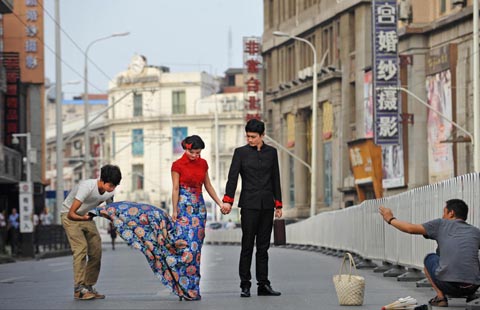
Largest project of its kind, proposed in 1952, took more than a decade to construct
More than 1,400 kilometers of canal and pipeline began transferring water on Friday from China's longest river, the Yangtze, to the country's arid northern regions, including the nation's capital, Beijing.
Completion of this section marks major progress in the enormous South-to-North Water Diversion Project, costing an estimated 500 billion yuan ($80 billion) and the largest of its kind in the world.
President Xi Jinping sent his congratulations on Friday to workers and people "who have made contributions" to the middle route project, calling the achievement a "major event" in the nation's modernization drive.
He said the success has come through ceaseless effort by hundreds of thousands of people since construction started on Dec 30, 2003. More than 200,000 workers participated in the construction.
Xi described the project as important strategic infrastructure that would optimize water resources, boost sustainable economic and social development, and improve people's livelihoods.
The south-north water diversion project is another feat of Chinese engineering, in the style of the Beijing-Hangzhou Grand Canal, the world's longest man-made river, constructed in the 13th century to transport grain between the south and north.
Water will eventually flow via eastern, middle and western routes along canals, pipelines and tunnels. It took eight years for engineers and workers to complete two 4,000-meter-long tunnels under the riverbed of the Yellow River, China's second largest.
The first-stage of the project, the eastern route, went into operation last year, sending water to Shandong province. By 2050, as many as 440 million people could benefit from the diversion of 44.8 billion cubic meters of water each year.
The middle route begins at Danjiangkou reservoir, in Hubei province, and runs for 1,432 km. It will supply 9.5 billion cu m of water per year to some 100 million people in the dry northern regions, including the cities of Beijing and Tianjin, and provinces of Henan and Hebei.
The water will meet household, industrial and agricultural demand, benefiting more than 100 counties.
President Xi urged the route's management to protect the quality of water and to save water.
Work still needs to be done to ensure the livelihoods and employment of the 400,000 people displaced by the construction, including 345,000 people whose hometown was submerged as part of the massive Danjiangkou reservoir.
Premier Li Keqiang said the project will benefit both current and future generations, and urged the project management team to ensure the security and stability of supply.
The project was conceived by late Chinese leader Mao Zedong in 1952 but only approved by the State Council in December 2002, after nearly half a century of debate.
It has been widely hailed as an example of how the Chinese people are capable of bettering their lives through hard work. But the new waterway presents fresh challenges, such as the protection of water quality from unforeseen natural risks in the future.








